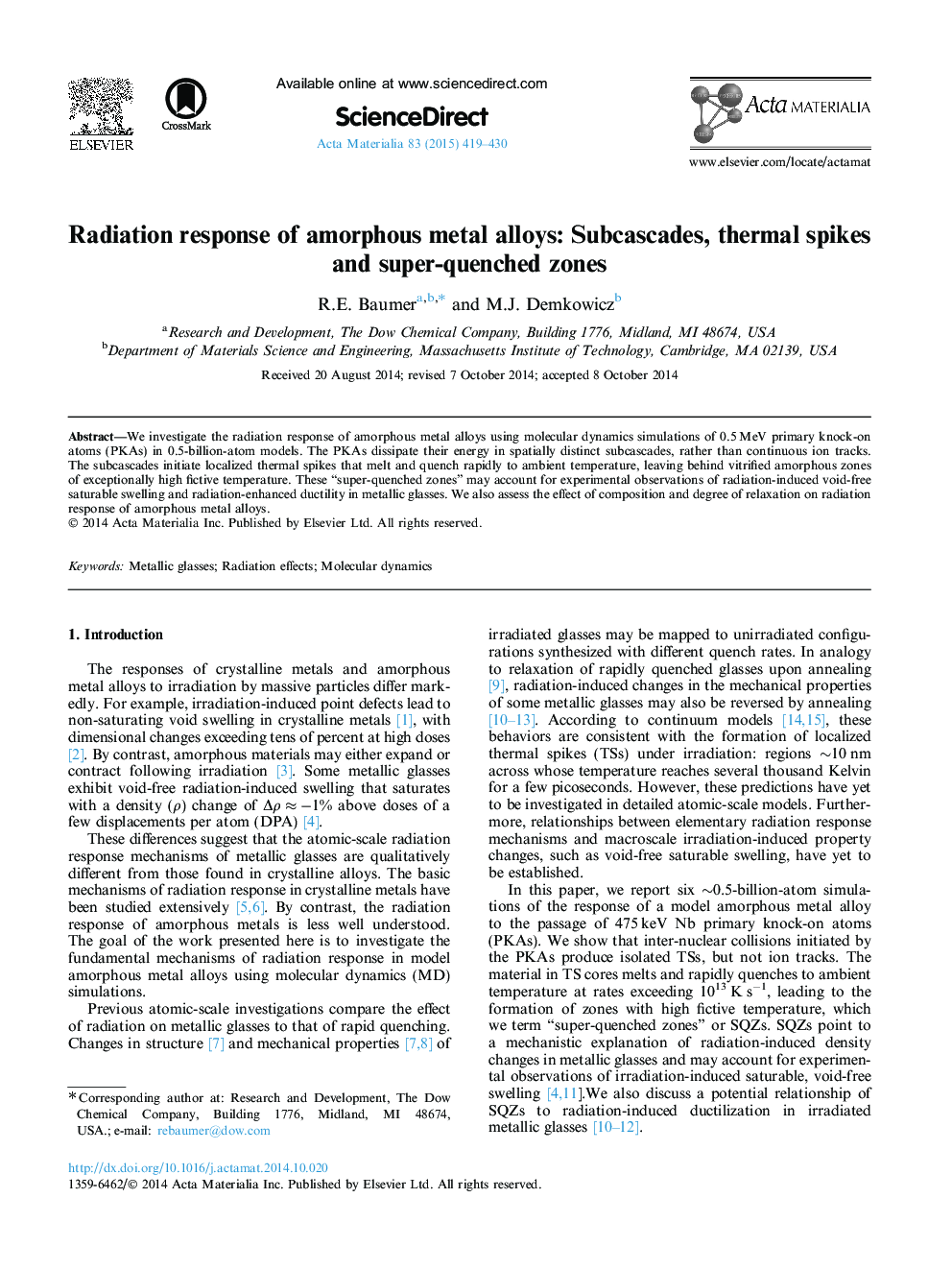| Article ID | Journal | Published Year | Pages | File Type |
|---|---|---|---|---|
| 7880946 | Acta Materialia | 2015 | 12 Pages |
Abstract
We investigate the radiation response of amorphous metal alloys using molecular dynamics simulations of 0.5Â MeV primary knock-on atoms (PKAs) in 0.5-billion-atom models. The PKAs dissipate their energy in spatially distinct subcascades, rather than continuous ion tracks. The subcascades initiate localized thermal spikes that melt and quench rapidly to ambient temperature, leaving behind vitrified amorphous zones of exceptionally high fictive temperature. These “super-quenched zones” may account for experimental observations of radiation-induced void-free saturable swelling and radiation-enhanced ductility in metallic glasses. We also assess the effect of composition and degree of relaxation on radiation response of amorphous metal alloys.
Related Topics
Physical Sciences and Engineering
Materials Science
Ceramics and Composites
Authors
R.E. Baumer, M.J. Demkowicz,
